The winter birds are almost gone. The white-crowned sparrows and winter ducks have left. The cedar waxwings should be leaving soon, though there are still many flocks singing in the trees. The summer birds have all arrived. Below is a photo of the last white-crowned sparrows of spring.
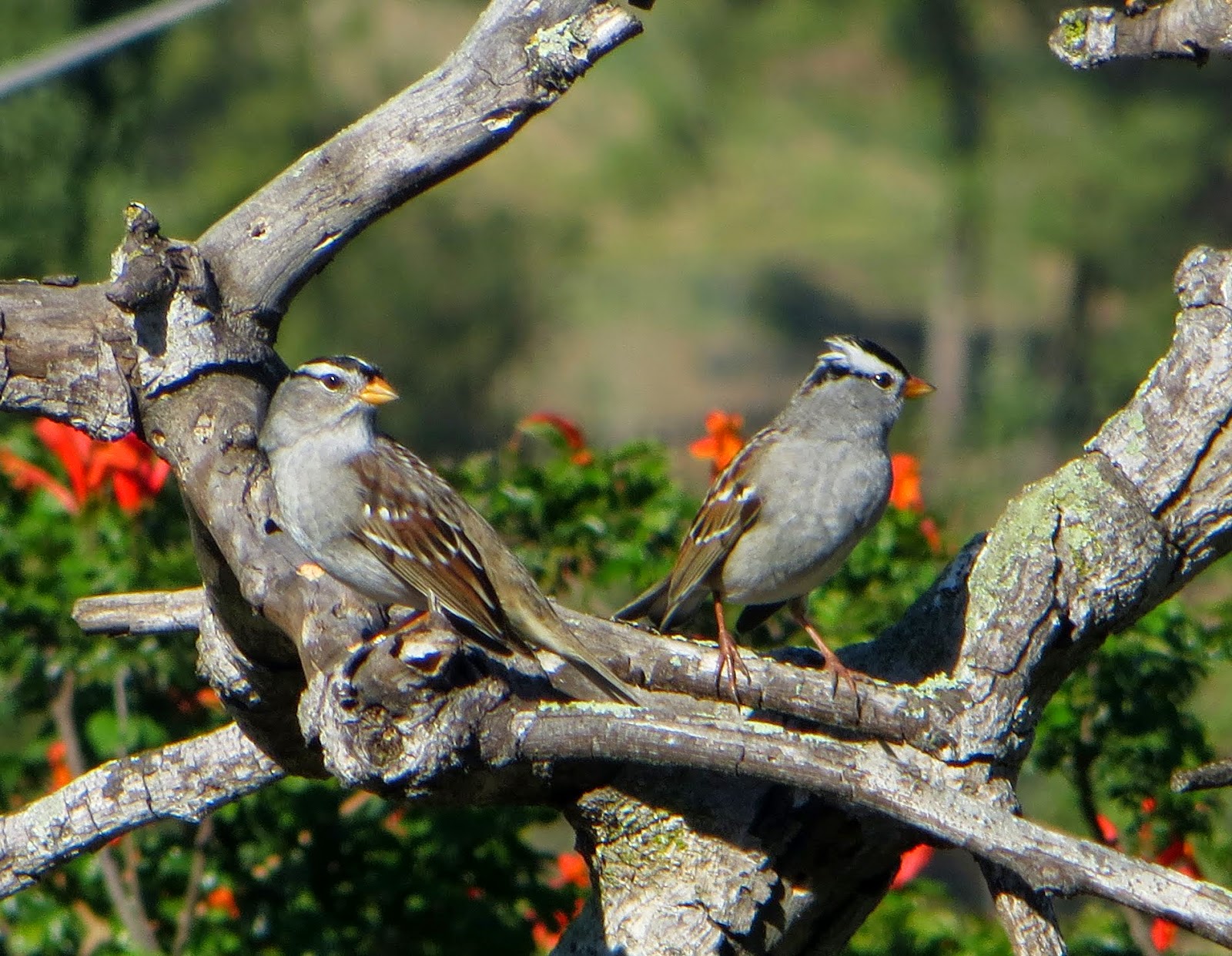 |
| White-crowned Sparrows |
A Pacific-slope flycatcher has been hanging around my backyard. Below are two photos of it.
 |
| Pacific-Slope Flycatcher |
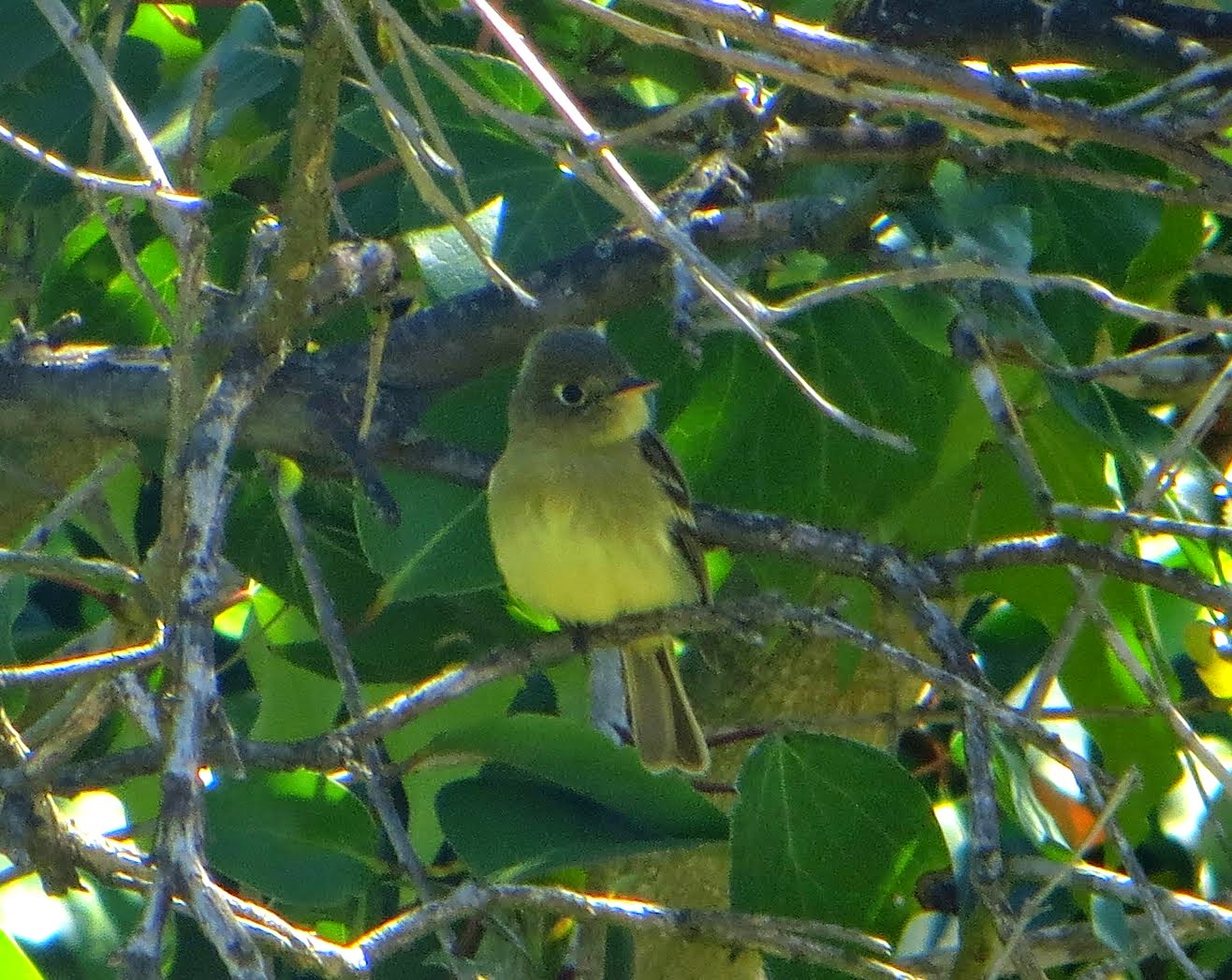 |
Pacific-Slope Flycatcher
|
There are quite a few hooded orioles around. Below are two photos. The first is of a male hooded oriole, and the second is of a female.
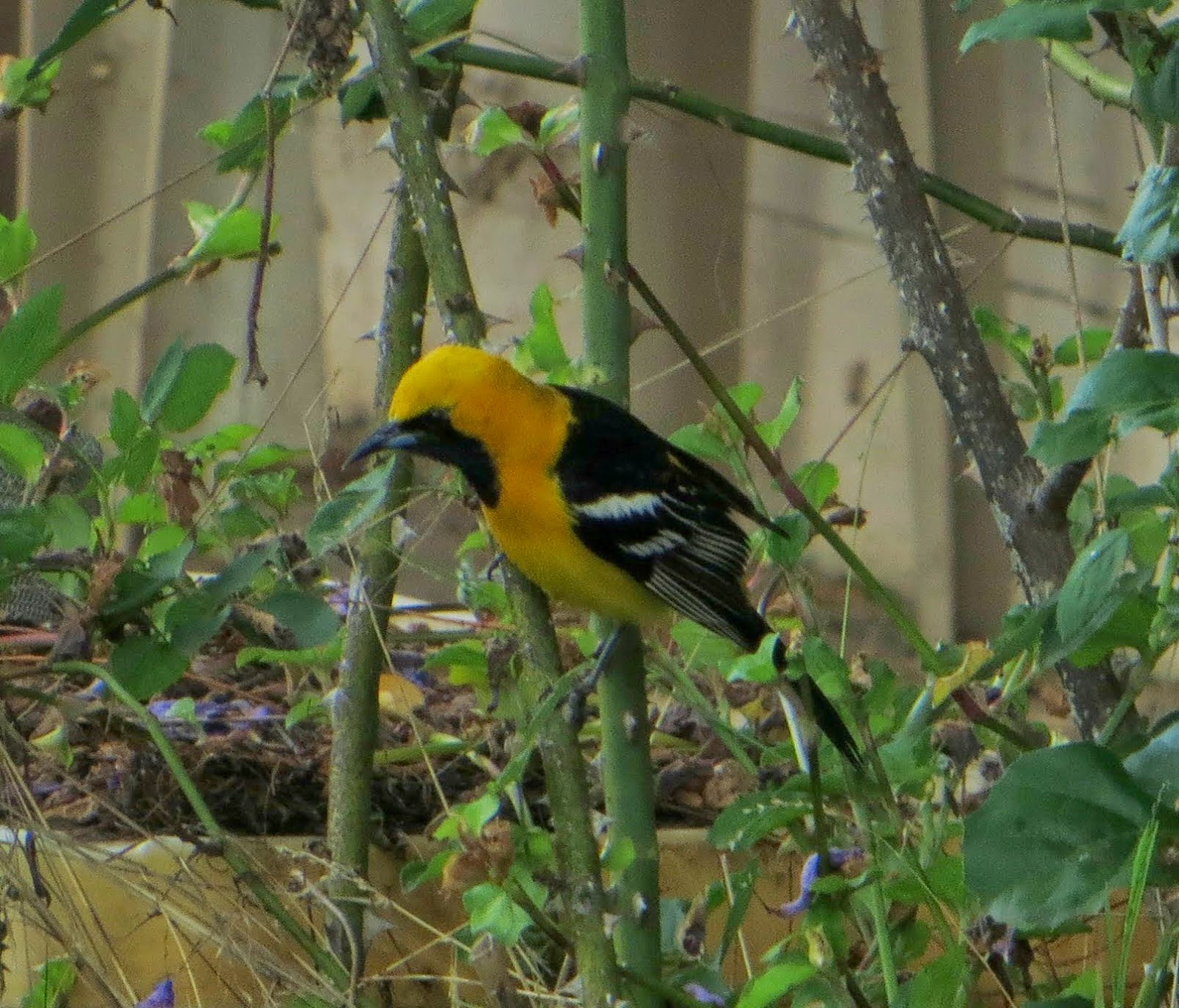 |
| Hooded Oriole |
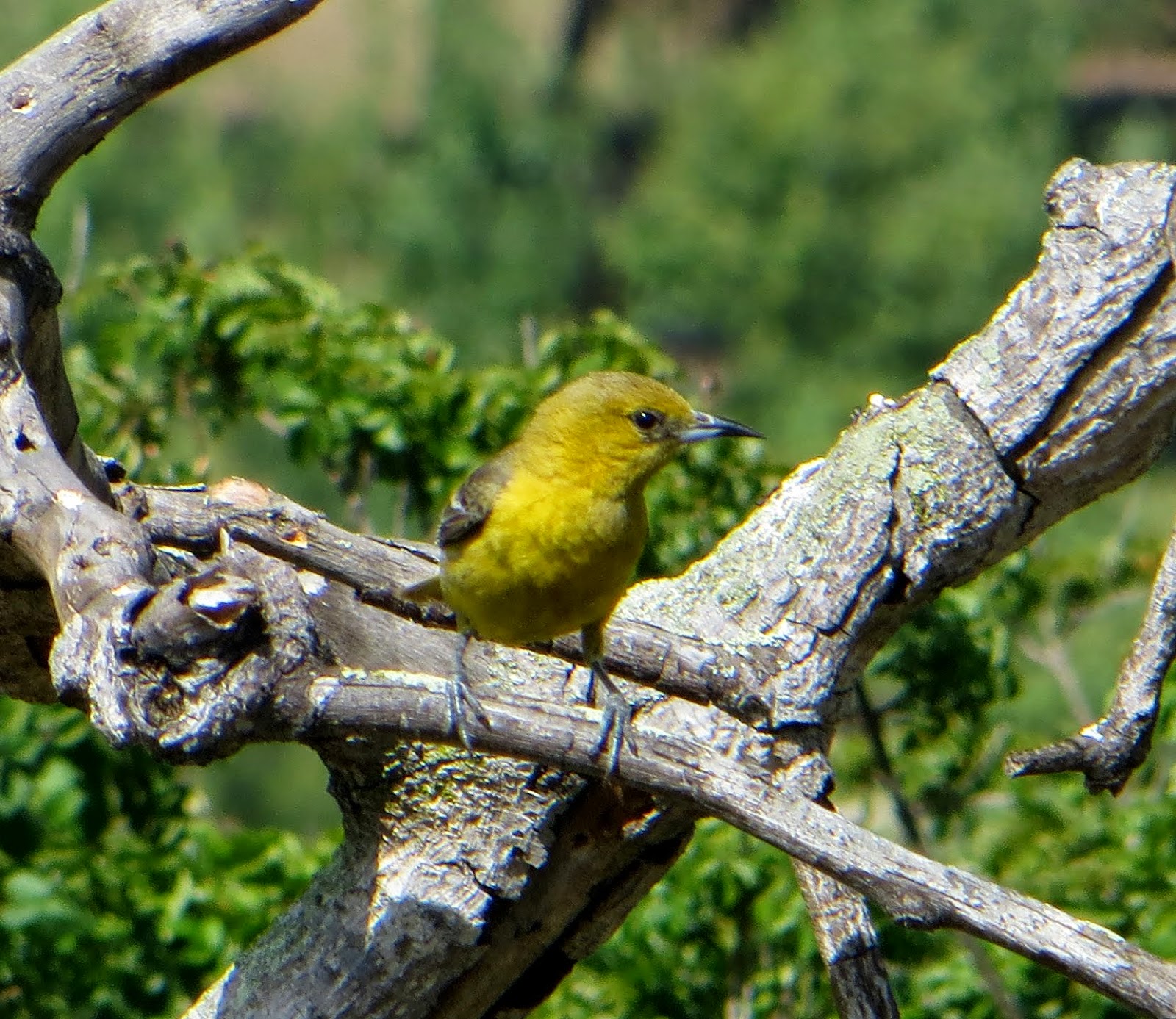 |
| Hooded Oriole |
The black-headed grosbeaks are here. I've seen a couple of females flying by or popping out of bushes. Below is one of them in a tree.
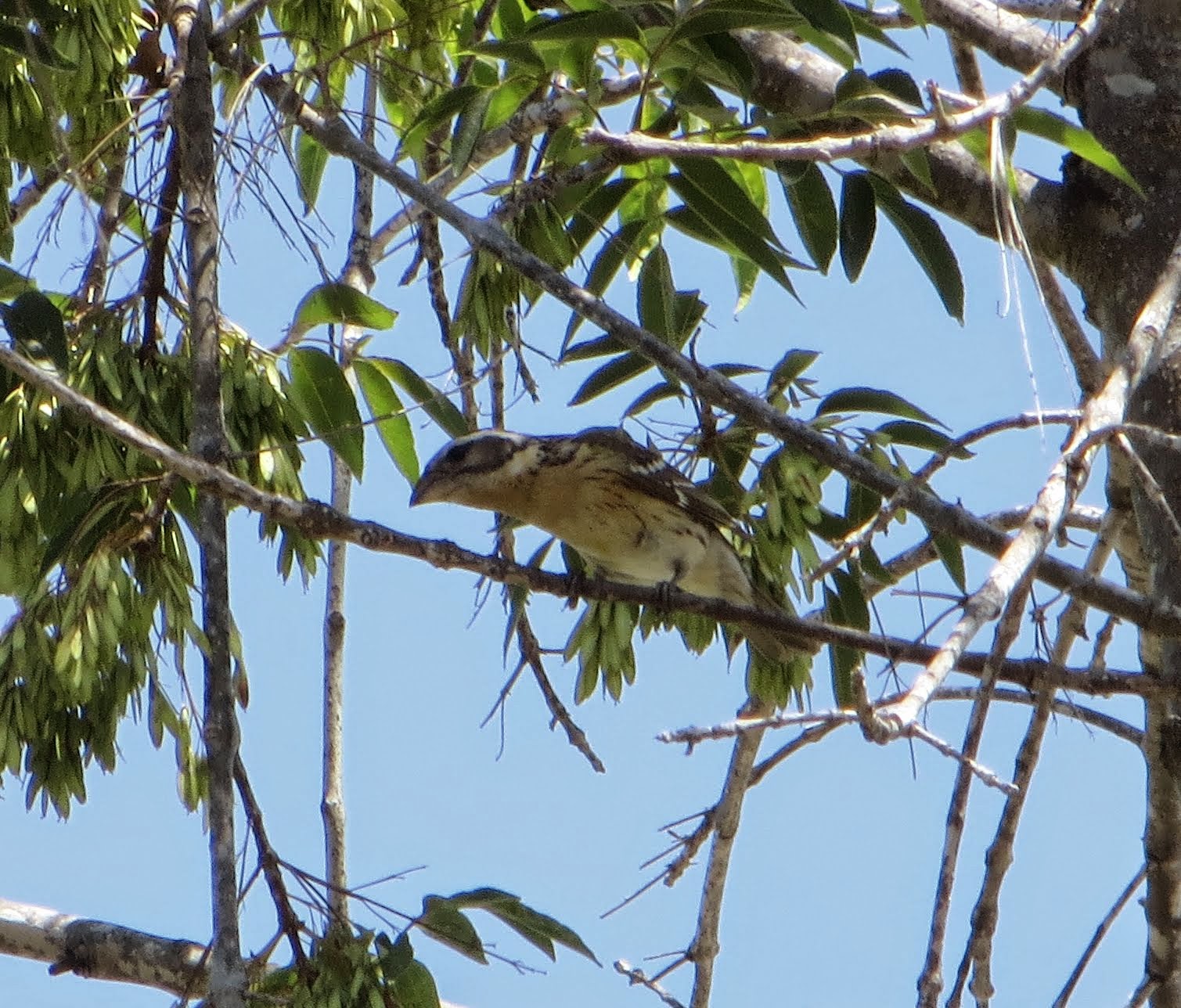 |
| Black-Headed Grosbeak |
The western tanagers have arrived, and I've finally been able to photograph them. Usually we see one in our neighborhood, though sometimes we don't any in the entire year. This year there are a few. They like to perch in the jacaranda tree. Western tanagers are found in the western United States, Canada, and Mexico in the summer, and southern Mexico and Central America in the winter. Males have black wings, backs, and tails, yellow bodies, pale wing-bars, and red heads. Females are duller with very little, if any, red on their faces. Below are three photos. The first two are of a breeding male. The third is of a nonbreeding male.
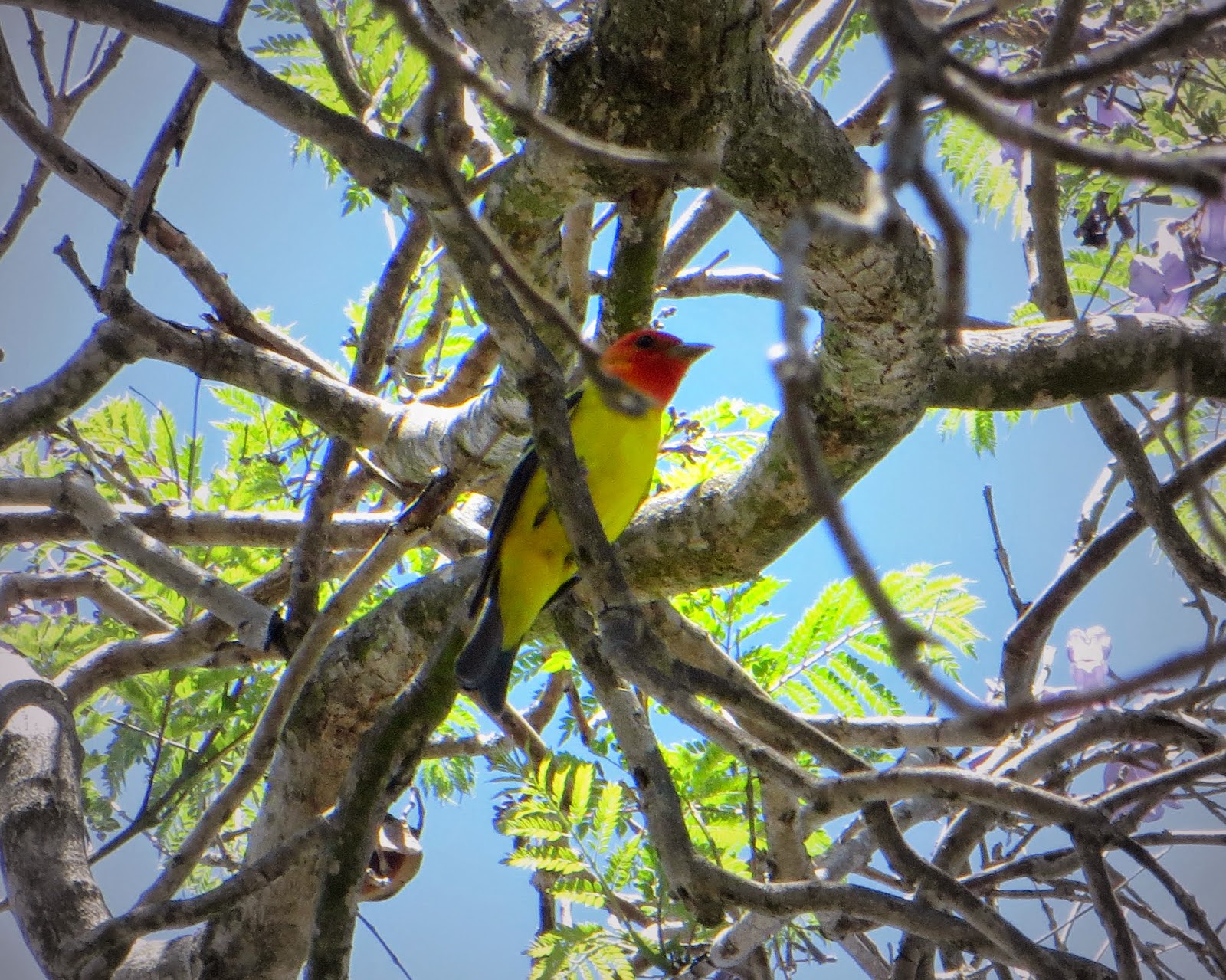 |
| Western Tanager |
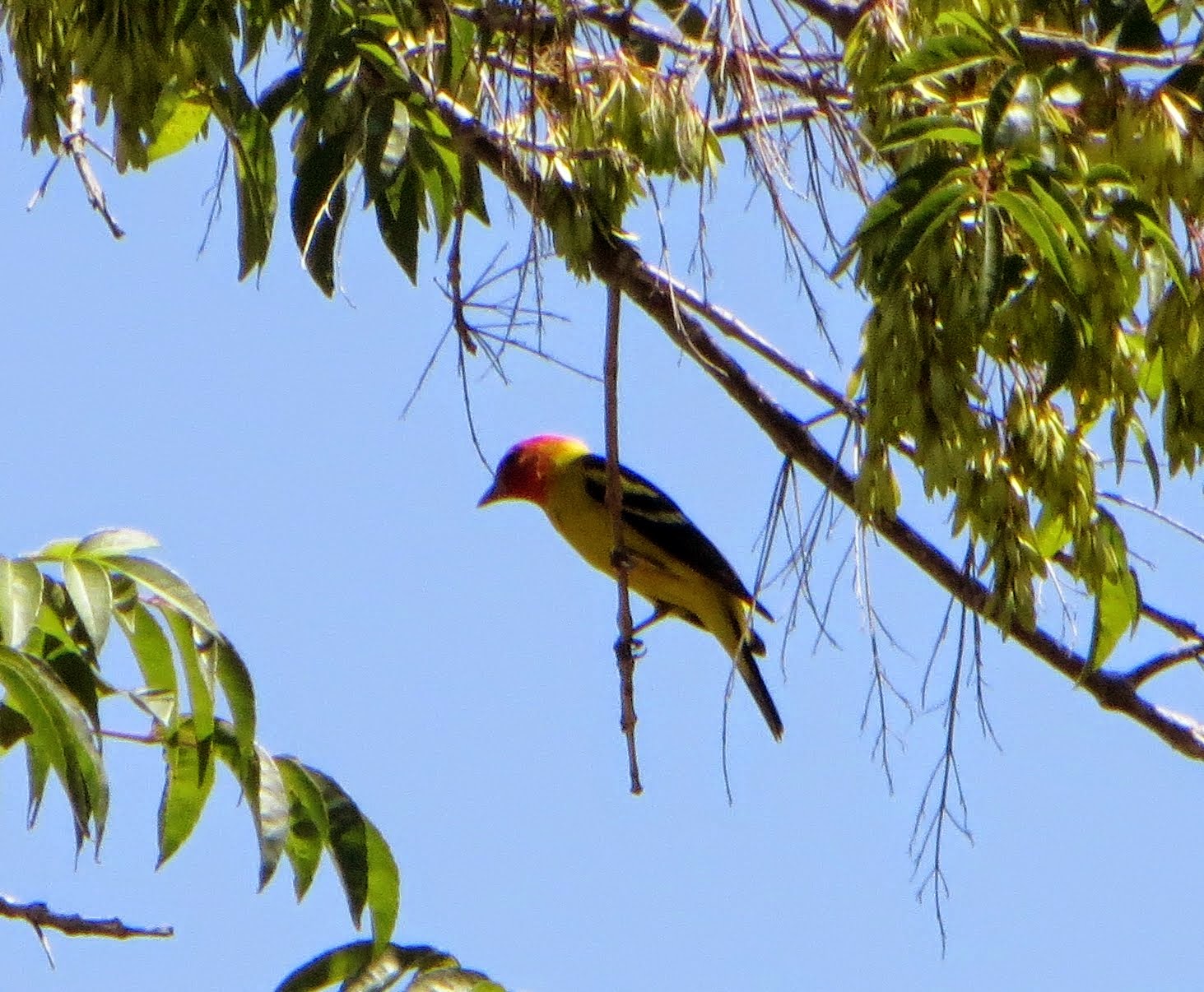 |
| Western Tanager |
 |
| Western Tanager |
It rained a little bit last weekend, and as I was looking out the window, a male yellow warbler popped up out of a bush to take a shower in the rain. Fortunately, I had my camera with me and took one photo before he disappeared back into the bush. Below is the photo (notice the red streaks on the chest).
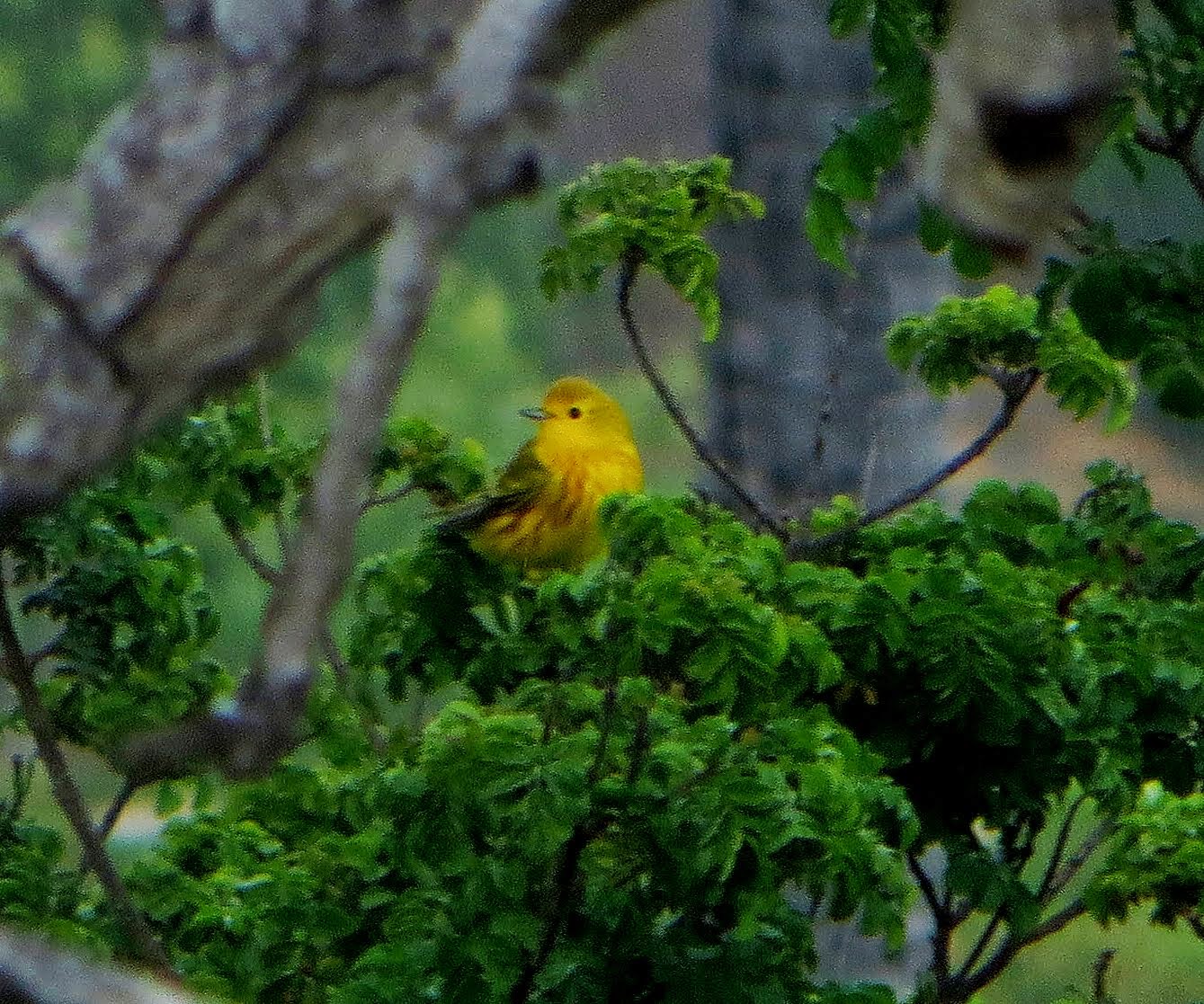 |
| Yellow Warbler |
It is a very good year for warblers. Just in my backyard I've seen five species, and an additional three outside of my yard. I saw the fifth last weekend, and it was a first for my life list. They were two Macgillivray's warblers; a male and female. Macgillivray's warblers are found in the western United States, Canada, and Mexico in the summer, and southern Mexico and Central America in the winter. Both males and females have gray heads, greenish-yellow backs, yellow bellies, and white eye-rings, though females are duller overall. They are somewhat secretive, preferring thick brush. Unlike many warblers, they are often found on the ground. The two in my yard chose the thickest plants on the ground, and most of the time, all I could see were the tops of the plants moving. Occasionally a warbler would pop out. I caught the male with my camera as he perched briefly on a rock. Below is the photo.
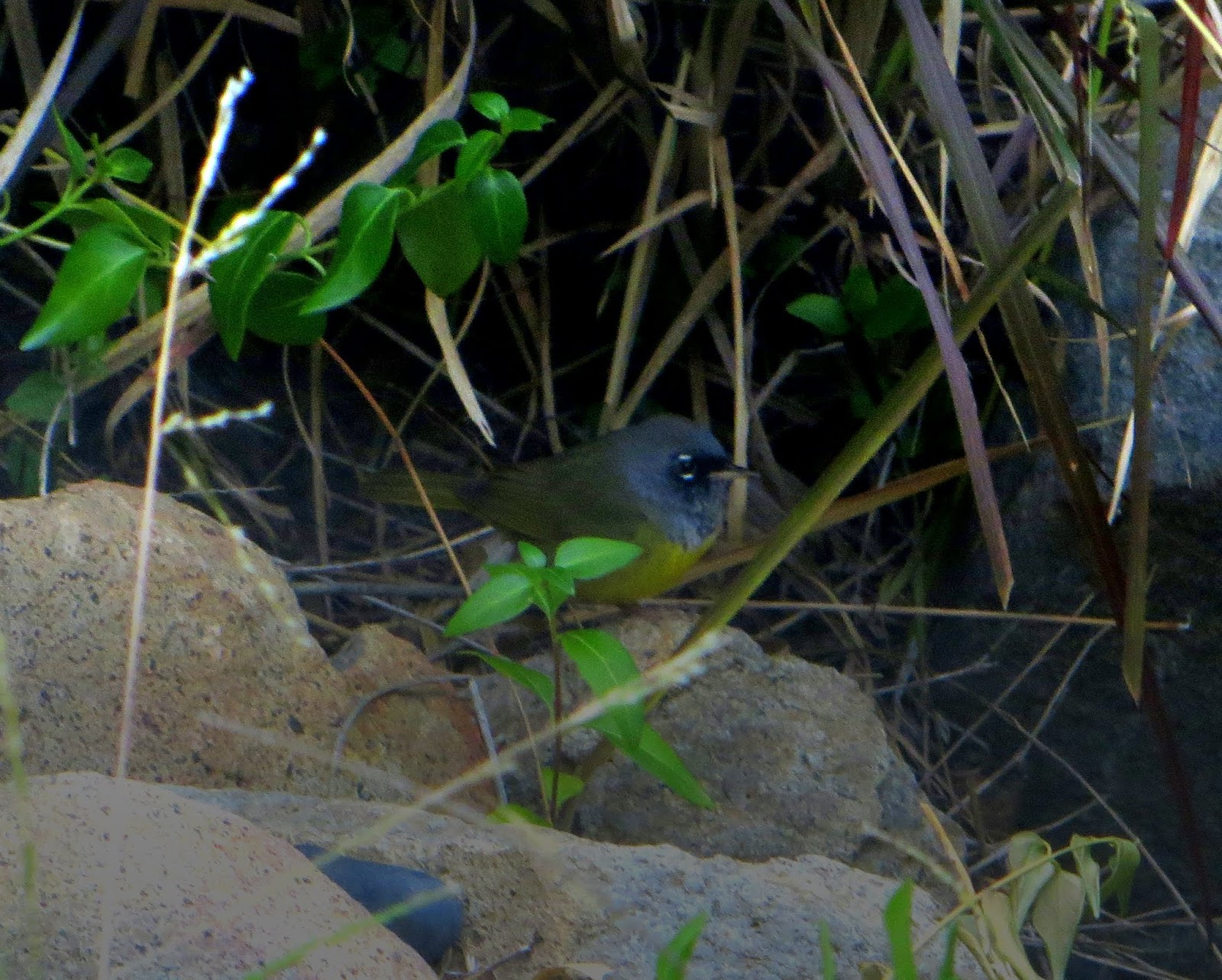 |
| Macgillivray's Warbler |
At school there are still flocks of horned larks around. They like to rest on the two sports fields. When there are people around , they move to some piles of gravel and dirt a short ways off. In the afternoon, they often perch on the fences and sing. Their songs are very pleasant; they sound almost like the tinkling of tiny bells. There are fewer and fewer of them in the neighborhood outside of school as more and more houses are built. There is only one open lot left, but it's very small and covered in tall grass, which the larks don't like. I doubt that I'll see them in there for much longer. Below are two photos of them on roofs of houses that I took a couple weeks ago. I haven't seen them there since.
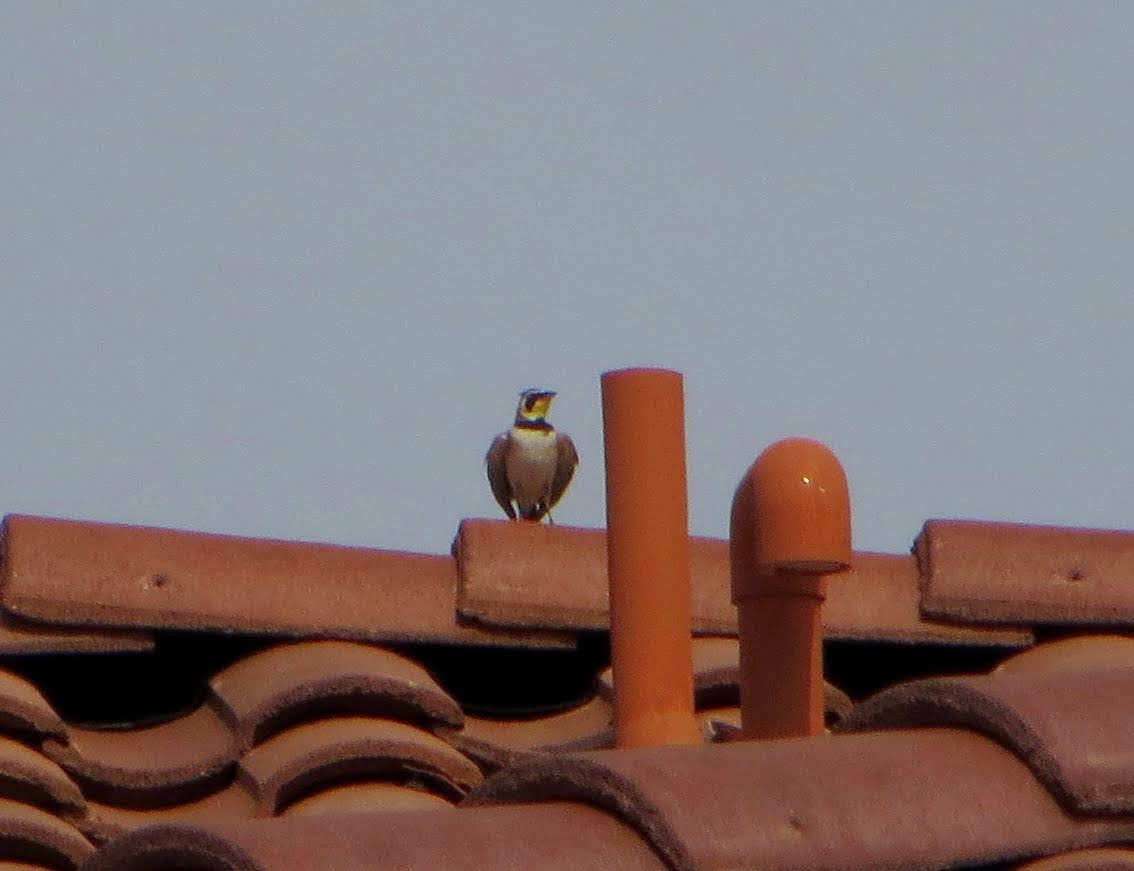 |
| Horned Lark |
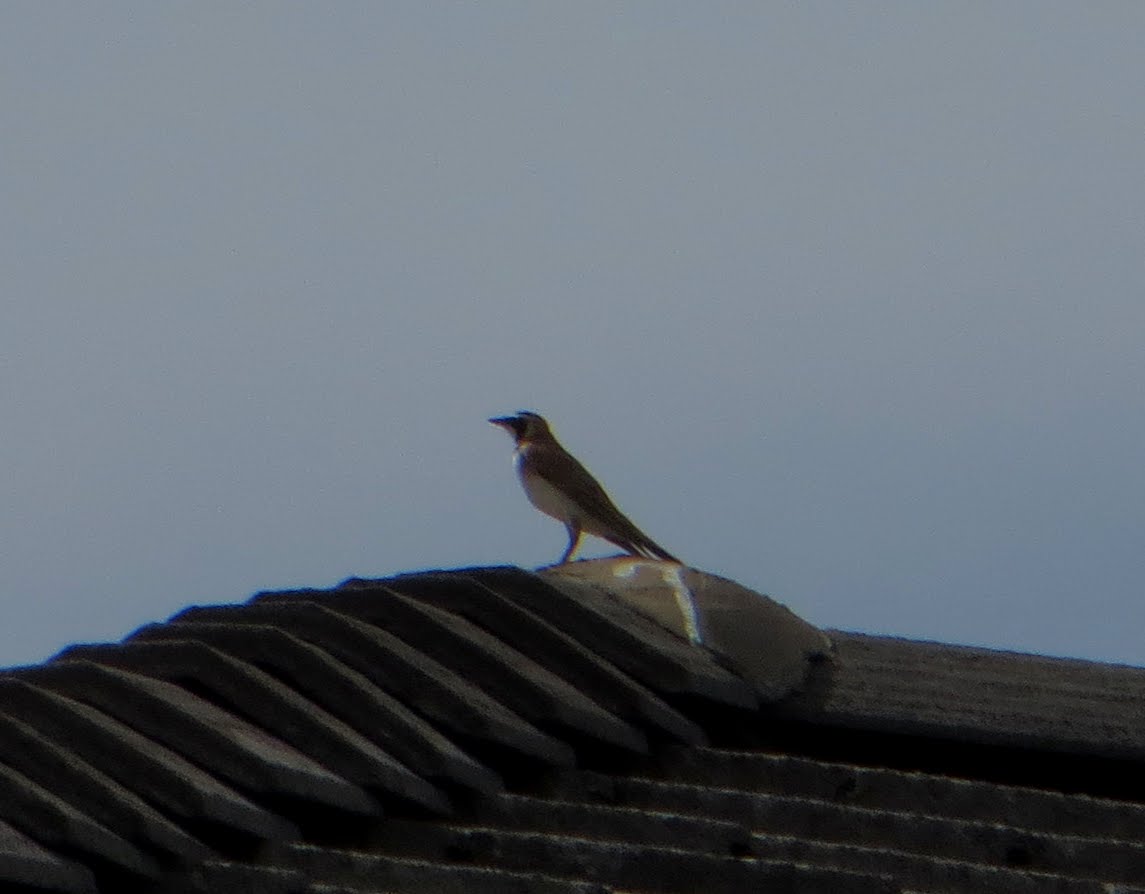 |
| Horned Lark |
A while ago there were house wrens in my yard. They are found in most of the United States and southern Canada in the summer, and the southern United States and Mexico in the winter. They are found in California, part of Mexico, and all of Central and South America year round. They are small and mostly plain brown. They have some thin striping on their wings and tails. They have a harsher voice than Bewick's wrens and although they are small, they are much more aggressive. Sometimes they will pull eggs and young out of other birds nests, and occasionally kill adults. They are a large problem for bluebirds, tree swallows, and chickadees, and are largely responsible for the disappearance of Bewick's wrens from the East Coast. I haven't seen any recently, so hopefully the Bewick's wrens can nest undisturbed. Below are two photos of house wrens.
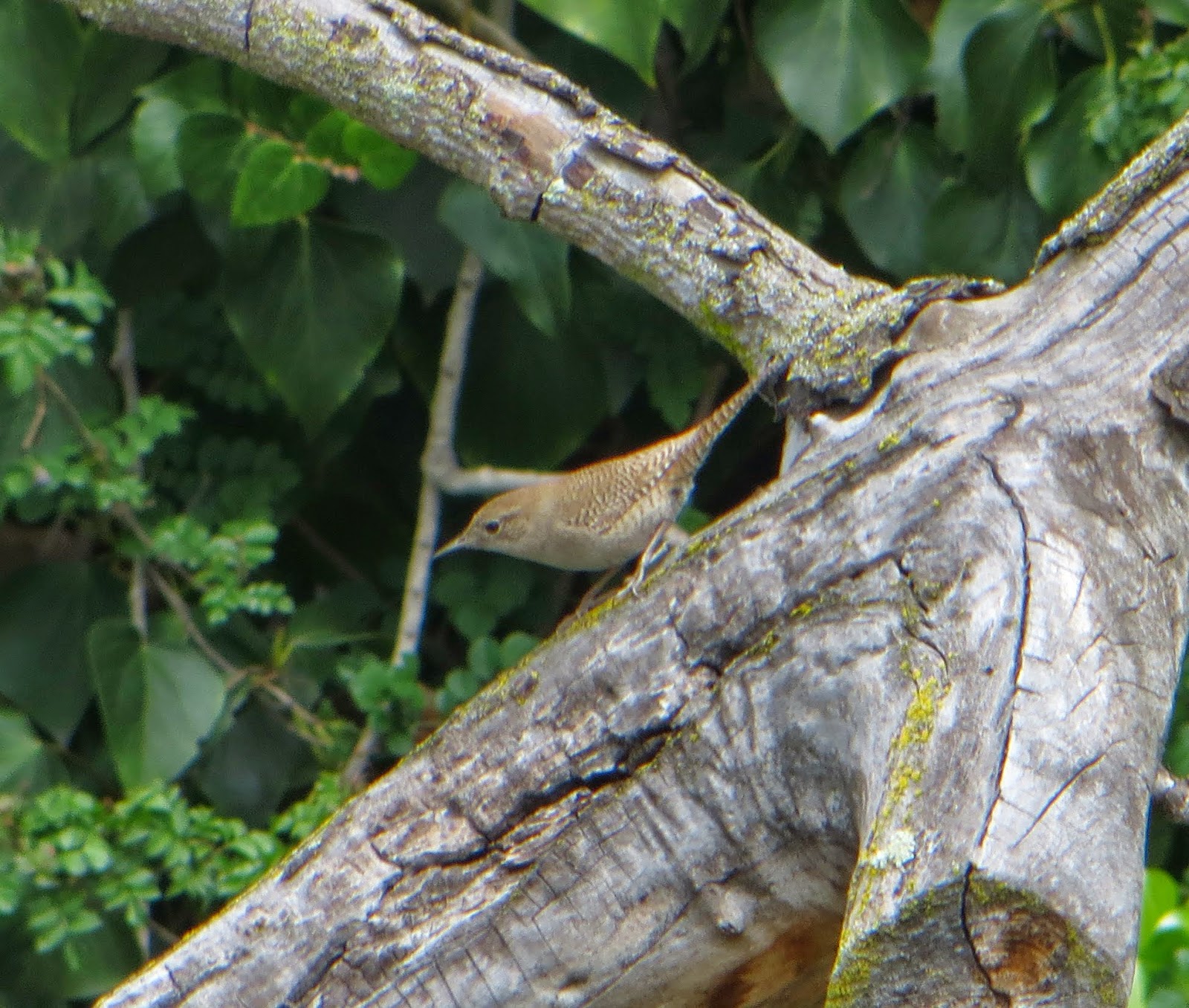 |
| House Wren |
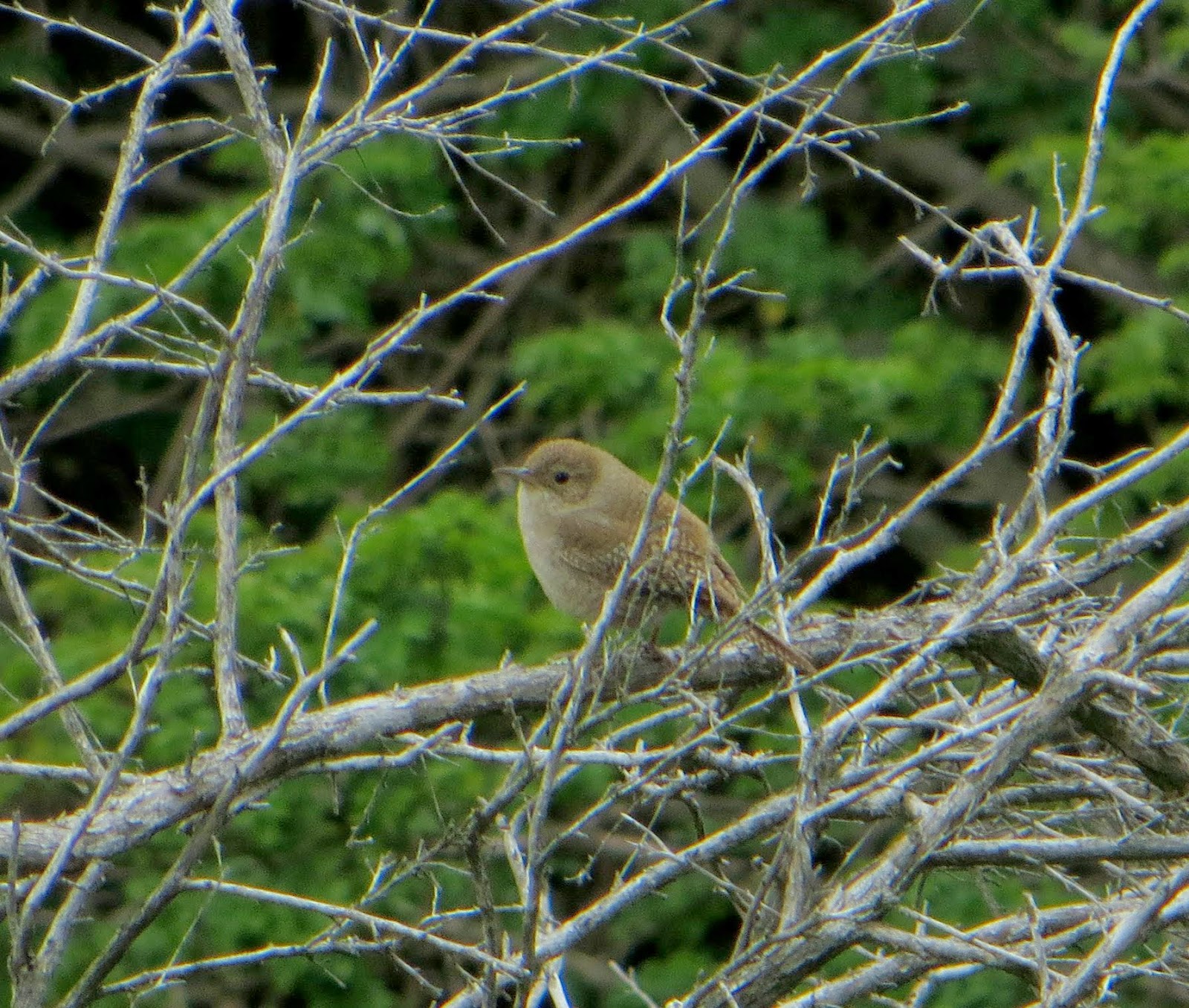 |
| House Wren |